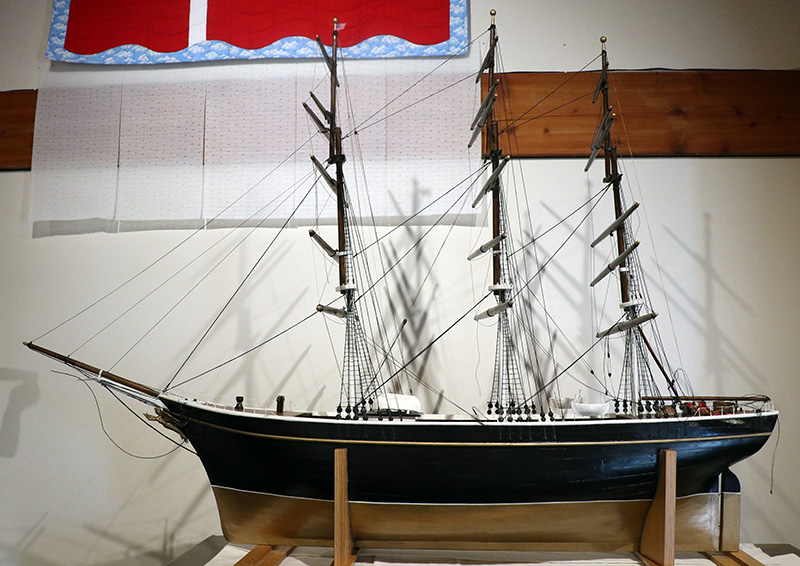Votive Ship

| Maker | Anonymous |
| Date of Creation | 1911 |
| Location | Denmark (Brought to Chicago, Illinois) |
| Materials | Wood and string |
| Institution | St. Stephen’s Evangelical Lutheran Church (Object submitted by Museum of Danish America) |
| Credit Line | Gift of St. Stephen’s Evangelical Lutheran Church |
| Accession Number | 1996.009 |
| Photo Credit | Angela Stanford, Museum of Danish America |
This votive ship, named Haabet, was originally purchased by Mrs. Jens Gregersen on a trip in Denmark in 1911. She gifted the ship to St. Stephen’s Evangelical Lutheran Church in Chicago, in appreciation of returned good health after a serious illness. This model ship was suspended in the nave of the congregation’s old church located at Vincennes Avenue and 64th Street. In the late 1930s, the congregation erected a new church at 85th and Maryland streets, where the model ship remained until March of 1995. The model ship was then cleaned and restored prior to its donation to the museum in January 1996. Votive ships of this type are common in Danish churches. While they originally were meant as an offering of gratitude after a safe voyage, in 20th-century America they were frequently given as a more general gift for hospitality, recovery from illness, or a token of support for their community. In addition to serving as a model of a very typical 19th-century sailing ship, this example exemplifies American continuity with Danish traditions, religion, and the role of the Lutheran Church in Danish America. The history of St. Stephen’s Evangelical Lutheran Church, located on the South Side of Chicago, adds to the Haabet’s significance. St. Stephen’s congregation changed in the 1930s, around when it relocated, from being predominantly white Scandinavian American to being predominantly African American. Informal oral histories associated with this object suggest that the Haabet came to be seen by that community as a token of the Middle Passage, and Black resiliency through the horrors of the slave trade. While more research needs to be done to understand exactly how this ship’s significance evolved over the 20th century, this votive ship illuminates cultural exchange between American ethnic communities.
